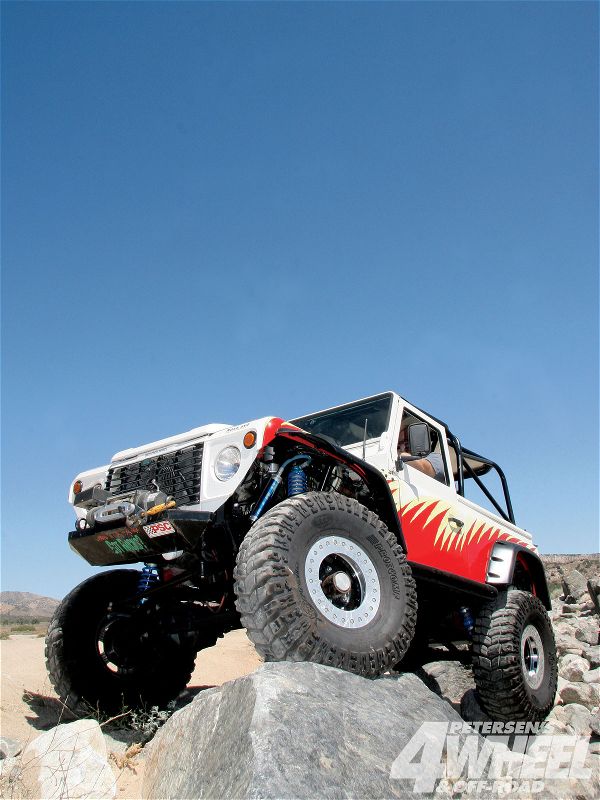
 Ali Mansour
Brand Manager, 4WD & Sport Utility
Ali Mansour
Brand Manager, 4WD & Sport Utility
Long-travel suspensions paired with short-wheelbase vehicles can create havoc on a driveline. While the abbreviated wheelbase and extended articulation make for a smooth and nimble trail machine, the compact drivetrain package often leaves wheelers with a short driveline fixed at an extreme angle. Though a short driveshaft is not necessarily a bad thing, a dramatic operating angle can lead to accelerated wear, breakage, and harsh driveline vibrations.

Last month we showed you the basics of the modern CV (constant velocity) driveshaft in the story "Driveline 101." This month we examine the latest in cutting-edge driveline technology with J.E. Reel's new 45-degree CV driveshaft.
Created for the wheeler that has extreme driveline angles, the 45-degree CV driveline is an off-road-only shaft that blends the durability of J.E. Reel's beefy aftermarket drivelines with the flexibility and strength of the RCV Performance CV joint. Capable of operating from zero to 45 degrees, this fresh take on the CV shaft is a great solution for those needing more angle and performance over what a traditional 1310 or 1350 CV joint offers. To get a closer look at this cutting-edge driveline we went to J.E. Reel's headquarters in Pomona, California, and got the exclusive scoop on the company's latest creation.
Reel Travel
To put the new drivelines to the test, J.E. Reel fitted a front and rear set under Carey Steiner's competition Land Rover. With both of the Rover's shafts relatively short in length and resting at just a touch over 40 degress, the modified crawler made for a great R&D platform. After spending many hours over the rocks and dirt it seems that Steiner's Rover will finally have a pair of driveshafts that last more than a few trail rides. Though the current RCV-style drivelines are not intended for highway use, we were able to drive from trail to trail (hitting the highway for short bursts) with zero issues. Overall, the new drivelines are a great off-road solution for those dealing with extreme angles and are an easier investment than a wheelbase stretch or a custom/high-pinion axle conversion.





